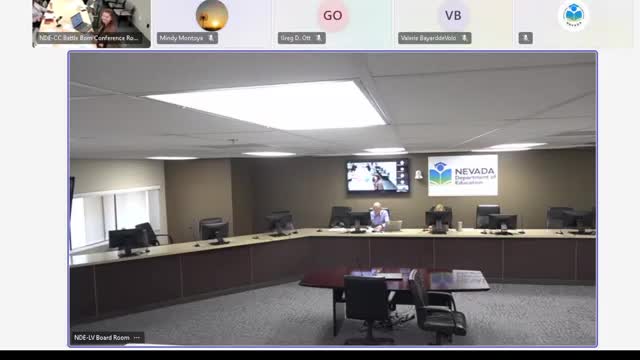DOE drafts statewide open-enrollment rules and transportation grant guidance under recent laws
October 20, 2025 | Department of Education, Executive Agencies, Organizations, Executive, Nevada
This article was created by AI summarizing key points discussed. AI makes mistakes, so for full details and context, please refer to the video of the full meeting. Please report any errors so we can fix them. Report an error »

The Nevada Department of Education presented draft regulations on Oct. 20, 2025, to implement a statewide open-enrollment system and transportation funding provisions in AB 533 and SB 460. The proposed rules set a rubric-based review and approval process for district open-enrollment programs, define capacity calculations by instructional teaching stations, establish prioritization tiers for seat assignment, and outline requirements to apply for transportation grants funded by a $7 million appropriation for school year 2026–27.
Key elements: The draft requires districts to give priority to students living in the zone of attendance of 1- or 2-star schools (first priority), followed by other priorities as allowed by statute and district policy. For capacity calculations, the rules ask districts to assess the number of instructional teaching stations at a site and the number of seats per station with consideration for building occupancy and student–teacher ratios. The Department defined a teaching station as a distinct location designed for a group of students to engage in a specific learning task facilitated by a teacher or instructional support personnel.
Transportation grant guidance: Districts applying for the $7 million in transportation funding must submit an implementation plan, an estimate of the number of students likely to request transportation and an estimated per-student cost. Districts must engage families (for example, a family survey) to determine the transportation mechanism that best serves families. Permitted approaches include agreements with transportation providers, community programs, or individual reimbursement systems; districts may use one or multiple approaches.
Why this matters: The rules operationalize statutory priorities for access to higher-quality schools, require districts to estimate transportation demand and cost for grant approval, and aim to ensure transport funds are distributed to meet family needs.
Public comment: Clark County School District assistant superintendent Gia Mora spoke in support of the principals’ school choice approach, asked for flexibility in capacity determinations (for example, including gyms or labs that serve instructional purposes while excluding portable classrooms) and sought clarity on transportation fund administration and eligibility. Department staff acknowledged the need for flexible capacity calculations and said the “teaching station” concept was intended to address large nontraditional instructional spaces. Deputy Superintendent Christy McGill urged engagement with district transportation directors to resolve logistical and cross-agency legal issues affecting transportation delivery.
Next steps: The Department will refine language, submit it to LCB for drafting and continue coordination with large districts and transportation directors on operational details.
Key elements: The draft requires districts to give priority to students living in the zone of attendance of 1- or 2-star schools (first priority), followed by other priorities as allowed by statute and district policy. For capacity calculations, the rules ask districts to assess the number of instructional teaching stations at a site and the number of seats per station with consideration for building occupancy and student–teacher ratios. The Department defined a teaching station as a distinct location designed for a group of students to engage in a specific learning task facilitated by a teacher or instructional support personnel.
Transportation grant guidance: Districts applying for the $7 million in transportation funding must submit an implementation plan, an estimate of the number of students likely to request transportation and an estimated per-student cost. Districts must engage families (for example, a family survey) to determine the transportation mechanism that best serves families. Permitted approaches include agreements with transportation providers, community programs, or individual reimbursement systems; districts may use one or multiple approaches.
Why this matters: The rules operationalize statutory priorities for access to higher-quality schools, require districts to estimate transportation demand and cost for grant approval, and aim to ensure transport funds are distributed to meet family needs.
Public comment: Clark County School District assistant superintendent Gia Mora spoke in support of the principals’ school choice approach, asked for flexibility in capacity determinations (for example, including gyms or labs that serve instructional purposes while excluding portable classrooms) and sought clarity on transportation fund administration and eligibility. Department staff acknowledged the need for flexible capacity calculations and said the “teaching station” concept was intended to address large nontraditional instructional spaces. Deputy Superintendent Christy McGill urged engagement with district transportation directors to resolve logistical and cross-agency legal issues affecting transportation delivery.
Next steps: The Department will refine language, submit it to LCB for drafting and continue coordination with large districts and transportation directors on operational details.
View full meeting
This article is based on a recent meeting—watch the full video and explore the complete transcript for deeper insights into the discussion.
View full meeting